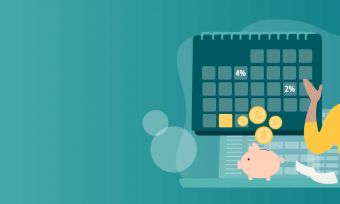There are a number of services that let you access your accrued pay without waiting for pay day. Here’s a look at how they work and what you should keep in mind.
Life can certainly throw us financial curveballs and unfortunately many Aussies are unprepared to deal with the fallout. According to Canstar’s 2019 Consumer Pulse Report almost one quarter of the nation (24%) don’t have any savings which would make it very difficult to deal with any unexpected expenses. The report also found that of those that are not saving anything, close to three quarters (74%) are living pay cheque to pay cheque.
A look at how many people have accessed money from their super as a result of the pandemic is further proof that many Aussies aren’t in a strong enough position to deal with curveballs. Statistics by the Australian Prudential Regulation Authority (APRA) show that 2.4 million Aussies accessed a total of $18.1 billion from their super between 20 April and 28 June as part of the first tranche of the COVID-19 early release scheme.
Data released by credit bureau illion and consultancy AlphaBeta showed that people who withdrew super spent on average an extra $2,855 in the fortnight after receiving the funds compared with an average fortnight before receiving the money. About 14% of that was used to repay personal debts including credit cards.
So it’s clear that there is demand out there for access to quick cash and as a result there are now a number of services that let employees get access to their pay ahead of pay day such as InstaPay from Employment Hero, PayActiv and Earnd.
How do pay-advance services work?
They can give you access to your earned but not paid income in advance. Your employer will need to be on board and work with the provider for you to be able to use the service. Most let you request the pay advance via an app and the amount is automatically deducted from your wages the next pay day.
There are limits to how much you can get paid in advance. InstaPay for example lets you withdraw up to $250 or 50% of your calculated earned wages (if it is less than $250) per transaction. You are allowed a maximum of two transactions per week.
The fees charged also vary between providers. Earnd, for example, is free for employees while with InstaPay you’ll pay $2 per transaction.
Is using a pay-advance service a good idea?
Some may argue that it’s your money and there is nothing wrong with getting your hands on it ahead of time rather than waiting two weeks or a month. And given that there is no interest charged – although you may pay a fee – it is certainly a cheaper option than say a cash advance where interest is calculated from day one or even worse a payday loan considered to be the lender of last resort
At the end of the day though this is simply a band-aid solution. If you take half of your wage before pay day how can you live on half of your wage the following week?
If you don’t have enough cash flow to get you through to your next pay and no buffer to handle any unexpected expenses that crop up it could mean there is an underlying issue.
What should I do if I am having trouble making ends meet?
It’s important to work on the source of the problem rather than seeking an instant fix. This can help you avoid getting caught up in a vicious cycle – admittedly that may be easier said than done. Here are a few steps you could consider that may help:
- Work out where your money is going which starts with a budget. You may also consider tracking your spending for a few weeks.
- If you need the extra money to pay bills, such as utilities, you may be better off requesting an extension rather than applying for an advance. That way you can set up payments you can afford over an extended time frame rather than having to pay back everything next pay day.
- Look for ways to cut back on some of your expenses. One way to do this is to look for better deals on regular bills such as your mortgage, electricity and gas and car insurance. Try to reduce any non-essential spending as much as possible.
- Explore options to help you make some extra cash. Are there items you no longer want or need that you may be able to sell? Is there a side hustle you can take up to bring in some more money?
- Work on building an emergency fund. If you don’t have money set aside you risk ending up in the same situation again.
- Arrange to talk to a financial counsellor. They should be able to give you practical tips to help you stop living from pay to pay.
Main image source: Sureeporn Teerasatean/Shutterstock.com.
This content was reviewed by Editorial Campaigns Manager Maria Bekiaris as part of our fact-checking process.






Share this article